
Now it’s time to look at the JIT Project Manager’s toolkit. How do we put these ideas into practice in our day to day work?
Through Workflow Strategies, a set of practical techniques for executing modern projects. Here is the full list, according to whether they work better for small or large-scale projects, and what kind of situation they are best suited for.
CaptureOrganizeShareScalePlanningOffloadingTrackingMetadataLinkingSearchingAdaptingRemixingSmallArchipelago of IdeasColor CommentaryMeta-PlanNaming ConventionsInterlinking NotesAdvanced SearchDial Down the ScopeSentence HackingLargeHeadings FirstStatus SummaryTemporary TagsTag HierarchyTable of ContentsBrainsweepContext SwitchFunction Follows Form
We are now in the crucial execution stage, where all our previous efforts at capturing, summarizing, and organizing packets of knowledge will pay off. It is in this final stage that we see whether the intermediate packets we’ve created end up being valuable.
Execution is also the most ambiguous stage, because people’s individual circumstances tend to diverge quite a bit. Whether you are an accountant or an airline pilot makes a big difference when it comes to applying what you know.
That’s why Workflow Strategies are less of a process, and more like a toolkit. The 16 individual strategies are each designed for a particular situation or problem to be solved. In the same way that different tools in your tool chest are suited for different jobs.
These Workflow Strategies are designed to help us execute our projects more effectively. They are standardized procedures that help us move faster, save our progress, and produce work of higher quality. They rely on having clearly summarized packets of knowledge (through Progressive Summarization) organized according to actionability (with P.A.R.A.), allowing us to combine those packets into valuable deliverables right at the moment they’re needed.
Here are the 16 Workflow Strategies we’ll cover in this chapter:
- Archipelago of Ideas
- Headings First
- Color Commentary
- Status Summary
- Meta-Plan
- Temporary Tags
- Naming Conventions
- Tag Hierarchy
- Interlinking Notes
- Table of Contents
- Advanced Search
- Brainsweep
- Dial Down the Scope
- Context Switch
- Sentence Hacking
- Function Follows Form
In this article I’ll provide a brief overview of each strategy, with further guidelines and examples in the next article.
PLANNING
1. Archipelago of Ideas
Workflow Strategy #1 is appropriate when you’re having trouble getting started on an intermediate packet, and want to avoid staring at a blank page. It provides a scaffolding of interesting ideas that you can then fill in and link together to write a document, create a design, or plan a presentation.
It is named for this quote, by Steven Johnson:
“Instead of confronting a terrifying blank page, I’m looking at a document filled with quotes: from letters, from primary sources, from scholarly papers, sometimes even my own notes. It’s a great technique for warding off the siren song of procrastination. Before I hit on this approach, I used to lose weeks stalling before each new chapter, because it was just a big empty sea of nothingness. Now each chapter starts life as a kind of archipelago of inspiring quotes, which makes it seem far less daunting. All I have to do is build bridges between the islands.”
Instead of starting with a terrifying blank page, Archipelago of Ideas has you collect a batch of starting ideas from the most relevant notebooks, which you then just have to string together. You can collect these ideas in your notes slowly over time, summarizing the words or phrases that resonate the most, and when the time comes to put them to use, create an outline with the ideas that seem relevant for the project at hand.
Here’s an example, of a collection of ideas I pulled together to start writing a blog post.
You can see that these are just hints or suggestions of ideas, which I pulled from a variety of progressively summarized sources as well as my own thoughts. It still took a lot of work to write them out coherently, but it was a lot easier having something to work with from the start.
2. Headings First
Workflow Strategy #2 is a larger-scale version of Archipelago of Ideas, for when you are beginning a larger project and don’t know where to begin. It lays out the major headings or stages of the project, giving you a roadmap to fill in as you discover what’s involved.
Zoom out a bit from the details of the project, and begin by just listing the headings or stages you think you’ll have to move through to complete the project. This takes little time and can provide a lot of perspective on how long it will take, how much effort it will require, and what kinds of challenges you’ll need to overcome.
Here’s an example, which is the very first note I ever created for the Building a Second Brain online course.
Filling in the details of each of these steps and executing them would take months, but taking 5 minutes to make this simple list instantly gave me a big picture view of the entire effort. Each item sparked ideas for people to talk to, articles to read, things to research, or experiments to try.
Headings First is essentially a very lightweight project planning technique. With nothing but a list, you gain a better sense of the timeline, how to break up the work, and which parts to focus on. As new ideas pop up, it’s just a matter of placing them under the correct heading. These headings can be stages in a timeline, titles of chapters in a book, sections of a report, or pages for a website.
OFFLOADING
3. Color Commentary
Workflow Strategy #3 helps you keep track of your own ideas, theories, and reflections, placing them in the context of the note that sparked them. It provides a way for you to offload your thinking as it occurs, so you can encounter the next paragraph or chapter with a clear mind.
I recommend adding these personal comments directly in a note and in a different color, to be able to separate your own thoughts from those of the sources you are referencing. Not only so you can avoid plagiarizing others, but so that you recognize when a good idea is your own!
In this example, I’ve added my own commentary on these book notes in pink, so I know instantly that they came from me, even if I don’t remember writing them. This technique can be very useful for tracking the evolution of your ideas over time, like a personal diary.
4. Status Summary
Workflow Strategy #4 is used to “freeze” a project you’re working on, to make it easy to resume later. It is the quick bout of convergence at the end of a work session needed to record the current status of the deliverable or project.
It involves briefly summarizing, in plain language, the current status of the project for the benefit of your Future Self, including details, remaining tasks, open questions, problems remaining, observations, personal commentary, or next steps. You can add it at the top of the note you’ve been working with, as a reminder of the state of mind you were in at the exact moment you left off.
Note the brief summary at the top of the note, reminding me that I’m testing out a new setup, and that there are three things I’m not sure about.
TRACKING
5. Meta-Plan
Workflow Strategy #5 involves making a list of the tasks you’ll complete on the way to completing your deliverable, to give you a sense of progress even if it isn’t clear where you’re going. It is useful for when a full-scale, detailed plan is unnecessary, but you want a little visibility into what’s coming up soon.
It is essentially “making a plan for making a plan,” thus the name “meta-plan.” This can include making a checklist of the places you should look or the sources you might want to consider. By checking each item off as you review it, you always know where you left off last time.
The example below is for an in-depth blog post I wanted to write, but had no idea how to get started. I did a quick brainstorm of any potential source that came to mind, adding checkboxes so I could track my progress one by one.
The items in this checklist can include specific books or articles that come to mind. Or you can add entire notebooks or tags for archived projects or topics you’d like to draw on. Notice that I didn’t check off every item. The goal is not to precisely follow the plan, but to provide a pathway that ensures you’ll look at a broad range of ideas.
Working with this note gave me a finish line to stay focused on, even though the project was very ambiguous. I knew that by the time I finished reviewing these sources, I would have enough material to work with.
6. Temporary Tags
Workflow Strategy #6 is also designed to help you keep track of which sources or notebooks you’ve already reviewed, except as you come across them, instead of upfront. Because you’ll be reviewing many separate notes across many different notebooks across potentially a long period of time, you need a way to track which ones you’ve already seen, in a way that cuts across different notebooks and even apps.
I don’t recommend tags as a primary organizational method, but when focused on an active project, they can be very effective as an ad hoc, temporary progress tracking system. When using many of the other Workflow Strategies, you’ll be diving in and out of various notebooks to find relevant ideas. But this can make it hard to remember which ones you’ve already seen. By adding tags such as “reviewed” when you’ve already reviewed a note, or “added” if you decided to include it in your project, you can see at a glance where you’ve already been.
Notice in the right-hand column that I’ve tagged these notes according to how I’ve used them in a current project. There’s no pressure because as soon as the project is done, I can delete the tags, without having to worry about maintaining a tagging system for the long term.
METADATA
7. Naming Conventions
Workflow Strategy #11 is to use a common naming convention for how you title your notes. This allows you to standardize on a common format that reveals the most relevant features of a note in a highly visible way.
Here’s an example of a template you can use:
I don’t recommend applying the same naming convention to every single note in your collection. This creates a lot of upfront work titling notes that may be of questionable value. But in a few cases it can be very useful:
- Especially large or complexprojects involving a large number of notes
- Commonly used resources that you’ll reference again and again, such as policies, procedures, or records
- Collaborative or team projects, where multiple people will be creating notes in a shared notebook
For these specific use cases, it can be useful to develop a standard naming convention. Using it in limited cases means you can customize the template for the needs of a specific project or topic.
8. Tag Hierarchy
Workflow Strategy #12 is also about standardizing how you organize your notes, except for tags instead of titles. Although I don’t recommend applying the same set of tags to all your notes, for especially complex or collaborative projects it can help everyone find what they’re looking for.
Here is an example of a tagging hierarchy, including tags for different areas of work, different situations, people, and other categories.
LINKING
9. Interlinking Notes
Workflow Strategy #9 is a method for enriching and networking your second brain, by creating explicit connections between notes as you encounter them.
This varies between apps, but most note-taking apps provide a way for you to copy and paste a link from one note into another. These links usually function just like hyperlinks on the web. Click one, and it will take you to the linked note.
You can also create links to external websites, to connect your private notes with public sources of information. You can post shareable links to social media, sharing bits of knowledge with others. You can paste links in your task manager, as a reminder of actions to take or thoughts to consider.
You are essentially networking your second brain with itself and with the external world, creating pathways for yourself and others to follow. This follows a principle of neurobiology called associative access, which means there are multiple ways to access any given idea.
10. Table of Contents
Workflow Strategy #10 is another way of enriching your second brain, by creating a table of contents (or directory, or index) of a group of notes in one place.
Evernote includes an automated way of doing this, by selecting and right-clicking on a group of notes and clicking “Create Table of Contents Note,” shown in the image below. But even if you have to do this manually, it is a powerful way to centralize a group of related notes so you can reference them more easily.
From here, you can add your own commentary under each link, describing how you want to use each note in a current project. You could send it to a colleague or collaborator as a compendium of your knowledge resources on this topic. Or you could use it as a personal reading list over a period of a month.
SEARCHING
11. Advanced Search
Workflow Strategy #7 includes “advanced” search tips that can be used to find the note you’re looking for more quickly, using different criteria. This depends a lot on which note-taking programs you’re using, but I’ll use Evernote as an example.
Here is a selection of search options used by Evernote. The left-hand column shows how the search terms should be typed, and the right-hand column shows which types of notes each search will find.
You can search for notes created only within the last 7 days, notes created in a certain month, in a certain location, or only notes that contain attachments. You can limit your search to a specific notebook, tag, or title.
It takes some investment of time to learn your program’s shortcuts and search terms, but if you’ll be developing your second brain for the long term, it can be well worth it.
12. Brainsweep
Workflow Strategy #12 is another method for searching your second brain, except instead of finding a specific item, you’re searching for a broad range of ideas related to a particular topic.
For example, you might want to know “What do I know about marketing?” Because you may have captured small bits and pieces of marketing wisdom over a long period of time, Brainsweep has you do a global search across your second brain so you can see all those bits in one place.
Once you have them in one place, you have many options, depending on your note app’s features:
- Create a saved search for the term “marketing” so any new note that includes that word will be automatically added to it
- Move all the notes to a new Marketing notebook if you think this topic will become more important in the future
- Tag the notes with the name of the current project you’re working on, and then remove the tag from each note as you review it, as a way of tracking your progress
- Merge or combine notes that are similar or duplicated, so it’s easier to review them in the future
- Go through the list of notes and extract the best parts, writing them up in a blog post called “Everything I Know About Marketing”
- Specific to Evernote: look in the Context panel at the bottom of notes to see any related notes
One of the greatest benefits of saving content in your second brain is that you can revisit it retrospectively, seeing patterns and connections in your learning over time. This can help you both consolidate previous learning, and plan for future learning.
ADAPTING
13. Dial Down the Scope
Workflow Strategy #3 is a useful strategy for staging your work as a series of short sprints, and adapting to every discovery you make along the way. It involves reducing the scope or size of the deliverable you’re working on to be able to make consistent progress.
It is better to complete something small than not complete something ambitious, so one of the most effective ways to get started is just to pick a very small version of the thing you want to create. And there is always a smaller or simpler version of whatever you’re working on.
Looking at each row from left to right: if your ultimate goal is to write a book, start with a blog post, or a social media post. If you’d like to make a short film, start with a YouTube video, or an impromptu livestream. If you want to run a paid workshop, start with a free one, or a group exercise with some friends.
You don’t even need to stay within one type of media. A talk at a meetup could be recorded and become a YouTube video. A blog post you wrote could lead to a guest appearance on a podcast. A workshop you run for a few colleagues could later become an online course. There are more opportunities for exposure than ever before, but you can only score a homerun if you have many chances at bat.
14. Context Switch
Workflow Strategy #14 is for when you are stuck, for one reason or another. You’ve made progress and all the necessary pieces are in front of you, but you can’t quite see how they fit together or what to do next.
It can really help when you’re stuck to change your context, which includes your environment, surroundings, state of mind, mental and bodily state, and approach. Try reading or viewing the information on a different device, switch locations from inside to outside or vice versa, or put the project aside to return to later with fresh eyes.
One of the most effective ways to Context Switch is to see the work through the eyes of another person. Share it with a colleague and look over their shoulder as they read it. I guarantee you’ll see it in a new way. Or you can read aloud what you’ve written, which activates different parts of the brain and will help you imagine how others will receive it.
There are countless ways to switch your context, and you can bring as much creativity to finding new ones as you do to the work itself. This technique takes advantage of the fact that our thinking is powerfully anchored to our internal and external environment. It can be much easier to change those environments than try to solve a problem through brute force.
REMIXING
15. Sentence Hacking
Workflow Strategy #15 is about remixing the words and phrases you come across in your research, so that they suit your needs. Quite often you will see patterns and connections that the original creator didn’t see themselves, and because this is personal knowledge management, you are free to add your own interpretation.
In this example, I noticed that the author was using a couple recurring themes, without calling them out explicitly. I cut and pasted these phrases together so my Future Self would clearly see the pattern.
Even though I’m moving phrases around, because these are direct quotes I can always go back to the original book and find where they are supposed to go if I need to. This allows me to start adding my own curation and interpretation, while minimizing the intellectual effort I’m investing.
Sentence Hacking can include creating internal structure in the document, such as pasting phrases from different sections into a single list, or adding headings that weren’t in the original but are meaningful to you. You could even cut and paste different sentences together, to express the ideas in a different way.
16. Function Follows Form
Workflow Strategy #16 is perhaps the most open-ended, but also most powerful strategy. It recognizes that often, the key to a breakthrough is simply reframing what you’re looking at.
This includes many ways of playing with the material you’re working with:
- Chronologically: put a series of ideas or steps in chronological order
- Prioritized: sort a list by priority, or importance, or urgency
- Sequentially: put items in order by function, or by stages in a workflow
- By objective: put each item in a list under its objective or desired outcome
- By size: order items from largest to smallest, or the reverse
- By theme: re-order a list by theme or topic, looking for patterns or groupings you didn’t see before
- Question-answer: rewrite your ideas in the form of questions and answers
- By shape: try mapping your ideas to different shapes like a circle, square, triangle, or hexagon, looking for any interesting patterns
This takes real creativity and an open mind, but can lead to profound insights. Just remember that there is no “correct” way of viewing or organizing a body of knowledge. What matters is whether it’s interesting, resonates with you, and creates value for others.
Workflow Strategies as Compressed Creativity
In the beginning of this book I quoted the mathematician Alfred North Whitehead, who famously said that “Civilization advances by extending the number of important operations which we can perform without thinking about them. Operations of thought are like cavalry charges in a battle — they are strictly limited in number, they require fresh horses, and must only be made at decisive moments.”
Workflow Strategies help you conserve your “operations of thought,” by partially automating the more routine and predictable aspects of your creative process. Because all types of mental activity compete for the same resources in the brain, compressing the easier ones down to the essential minimum frees up resources for more challenging, complex problems.
As Sebastian Marshall writes in Creative Processes, every discipline has “universal movements.” These are the basic activities that practitioners perform again and again, developing new levels of mastery over time.
Writers don’t usually just sit down to a blank page and write. They use cycles of brainstorming, categorizing, outlining, drafting, and editing to build up and refine material over time. An experienced writer is never truly stuck, because they know that at any impasse they can simply go through another cycle before writing more.
There are similar repeatable, predictable stages in the creative process for any kind of creative work: product development, online marketing, business analysis, consumer research, legal reviews. We don’t usually think of these fields as involving a “creative process,” but they do.
Sometimes people don’t want to use a repeatable process because they are afraid it will constrain them. But the opposite is true: it is only when you have a grasp of the universal movements of your discipline that you can personalize them, improve them, and make them unconscious. It is only when you can perform the basic automatically, that the furthest reaches of your field come within reach.
Mix and match the workflow strategies that make the most sense for you and your work. Use them with each new project, making small tweaks and improvements each time. Over time, you will develop a creative process that reliably produces great work to advance your business or career.
Or as David Allen puts it:
“Being willing to have ideas, good or bad, and to express and capture all of them without judgment is critical for fully accessing creative intelligence. Honing multiple ideas and types of information into components, sequences, and priorities aimed toward a specific outcome is a necessary mental discipline. And deciding on and taking real next actions—actually moving on something in the physical world—is the essence of productivity.”
The Only Subscription
You Need to
Stay at the
Edge of AI
The essential toolkit for those shaping the future
"This might be the best value you
can get from an AI subscription."
- Jay S.
Join 100,000+ leaders, builders, and innovators

Email address
Already have an account? Sign in
What is included in a subscription?
Daily insights from AI pioneers + early access to powerful AI tools
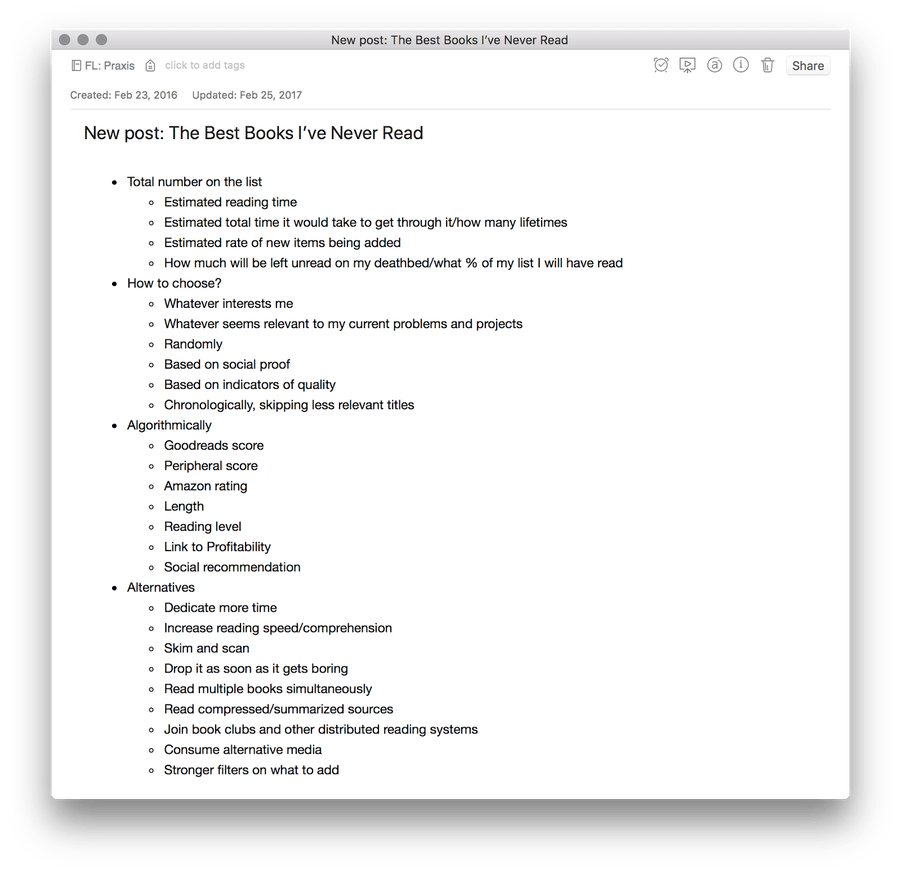
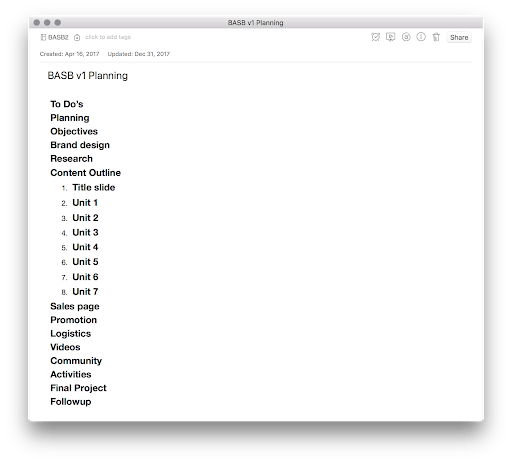
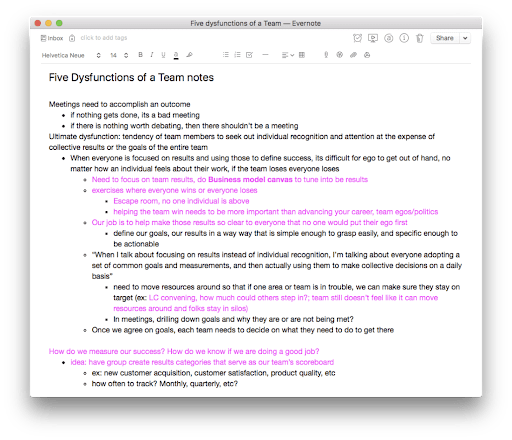
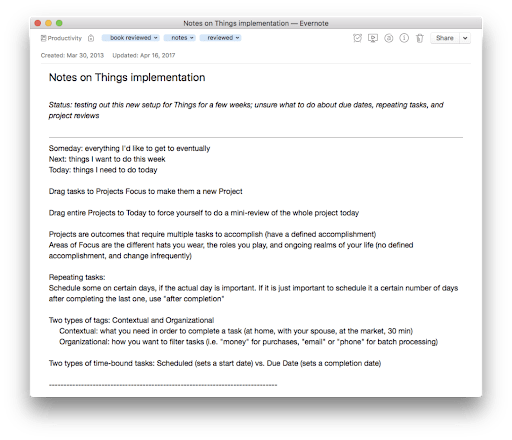
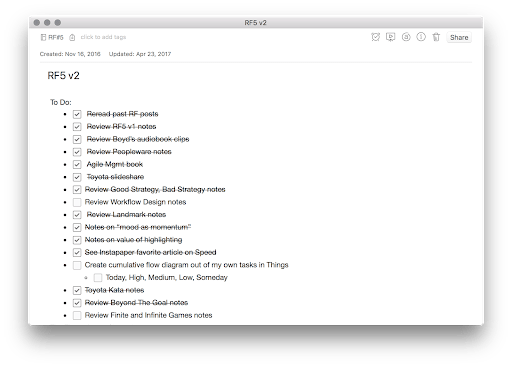
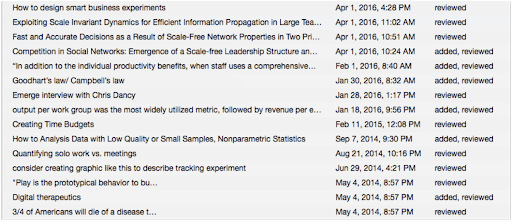

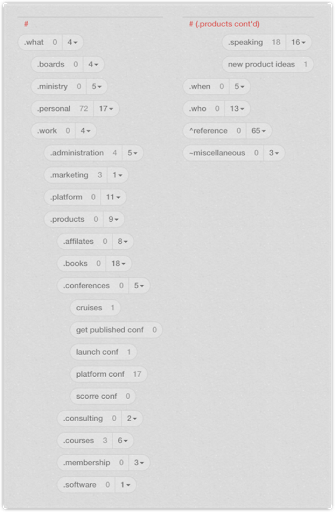
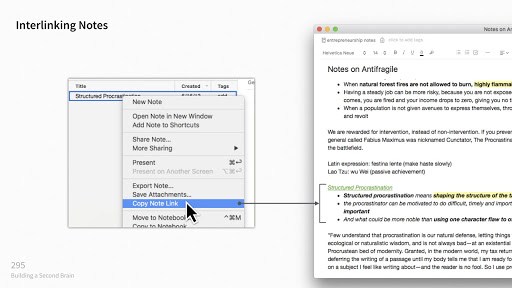
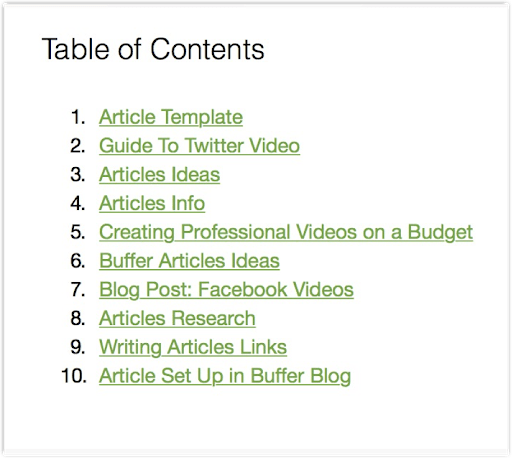
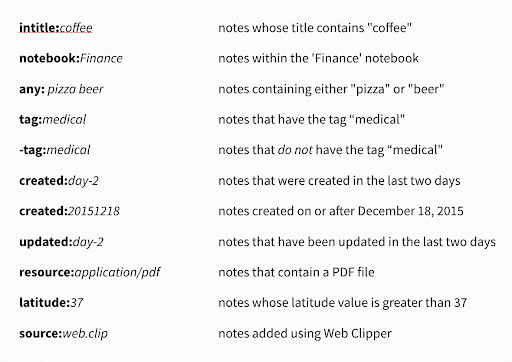
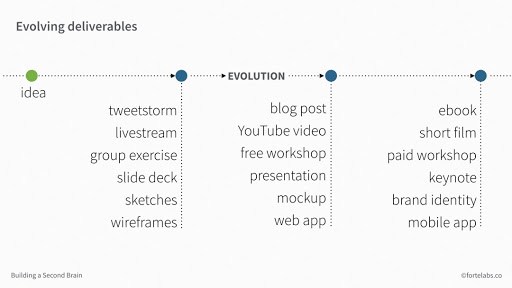
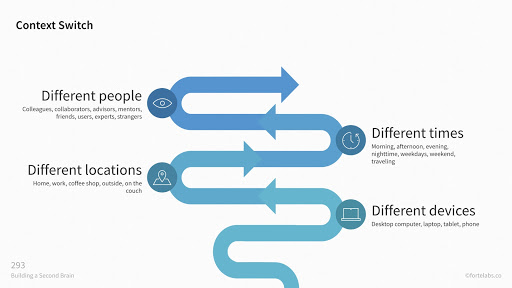
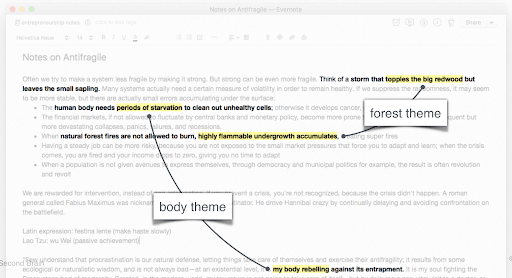







Comments
Don't have an account? Sign up!